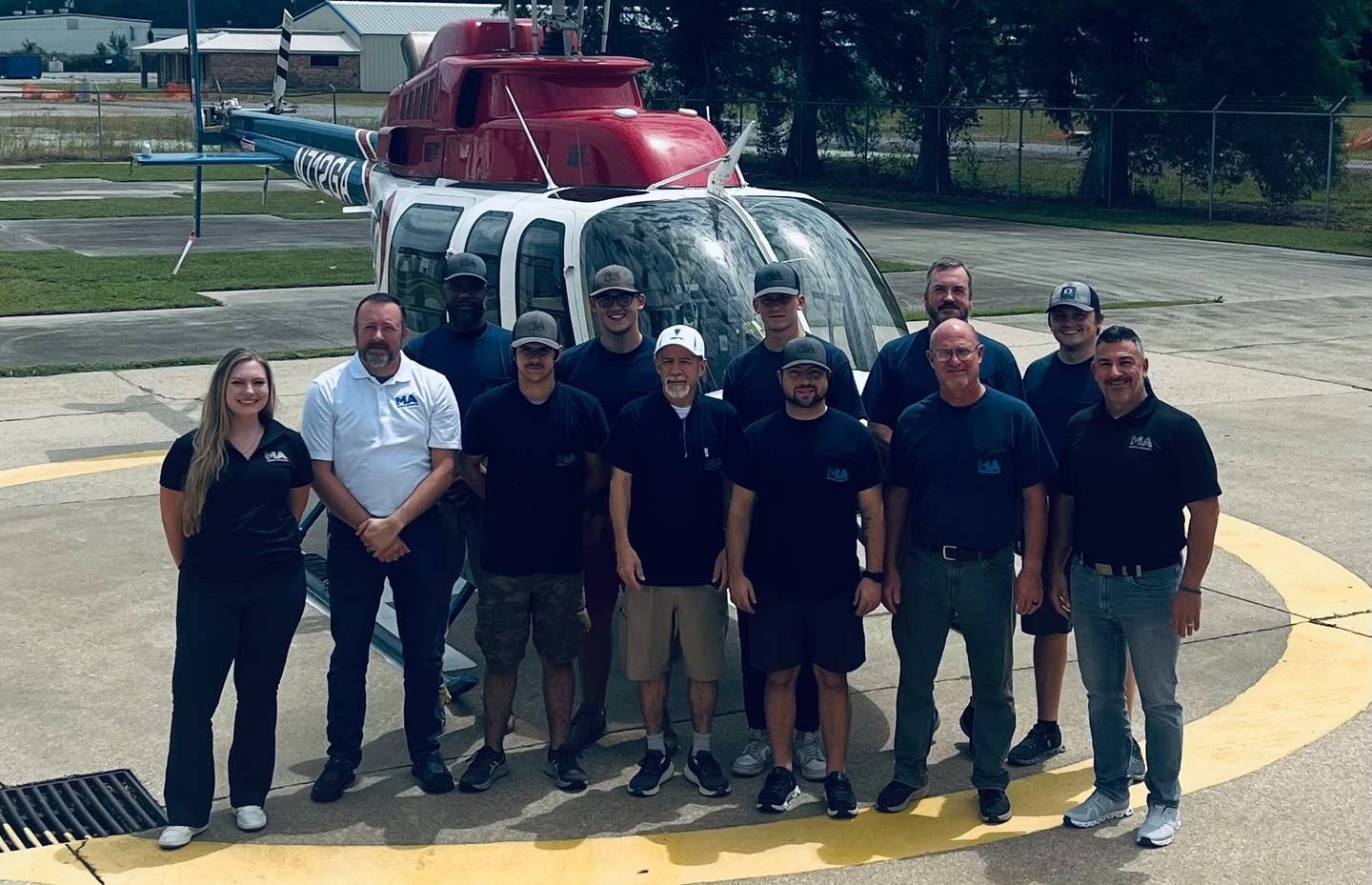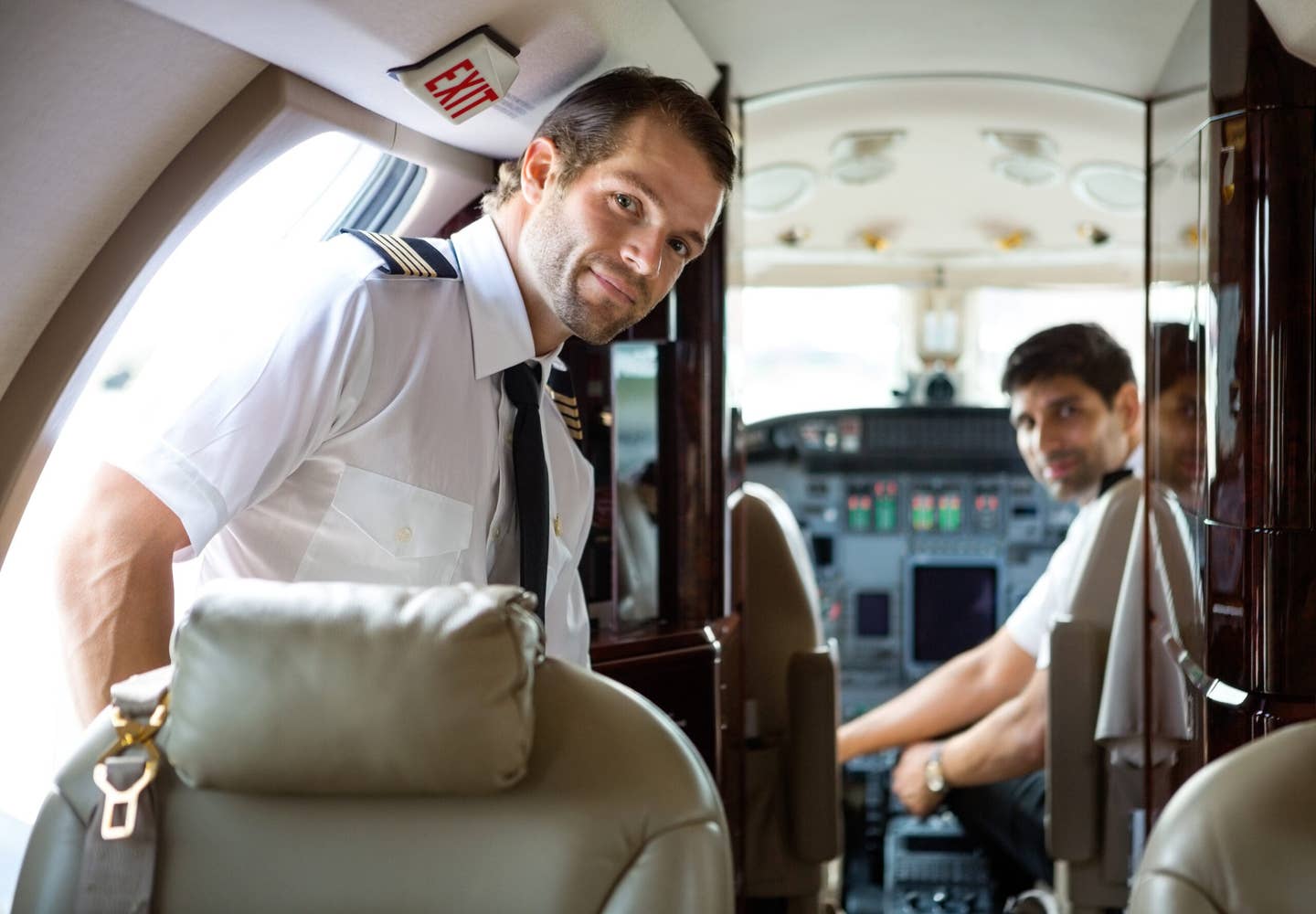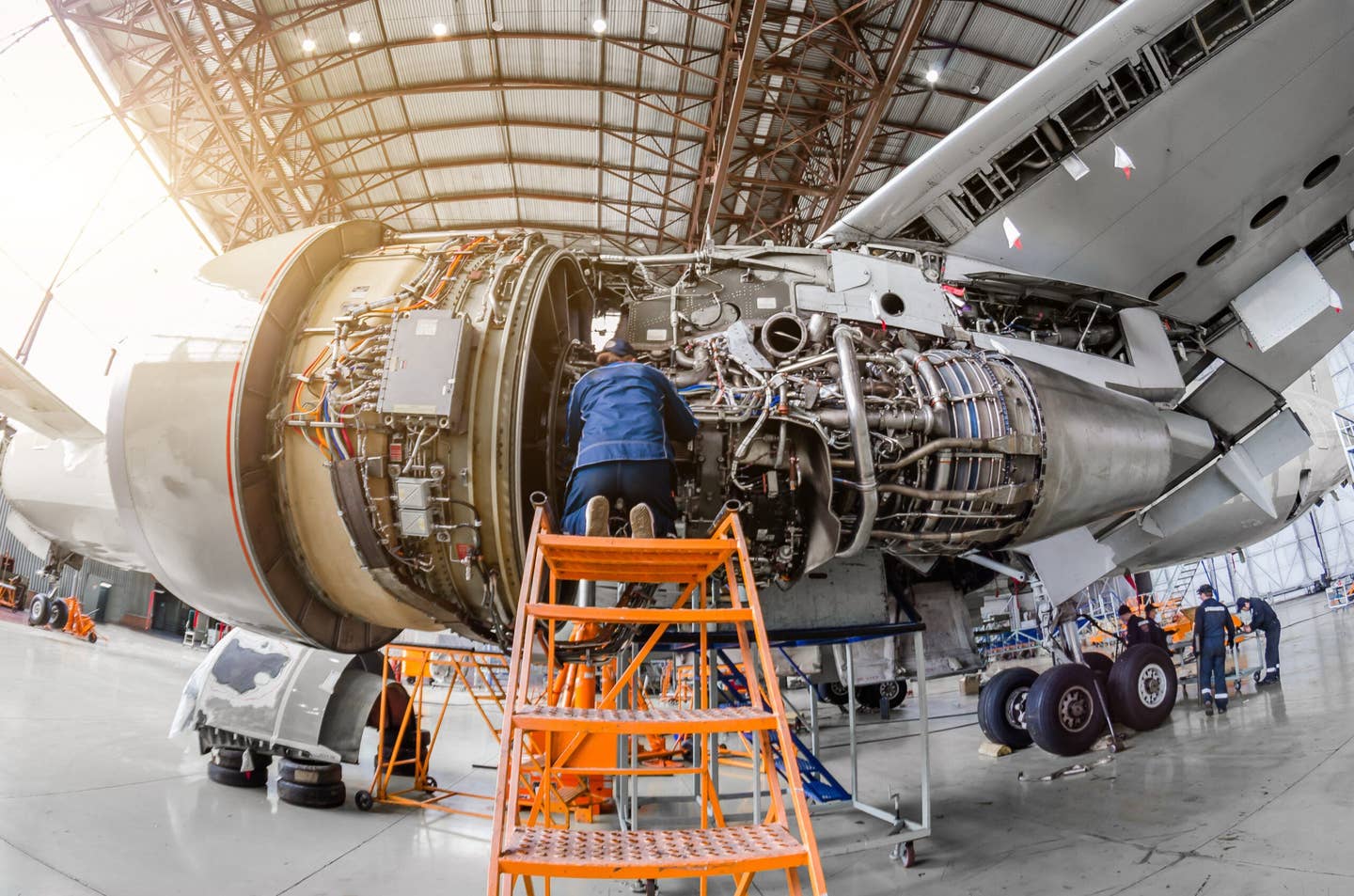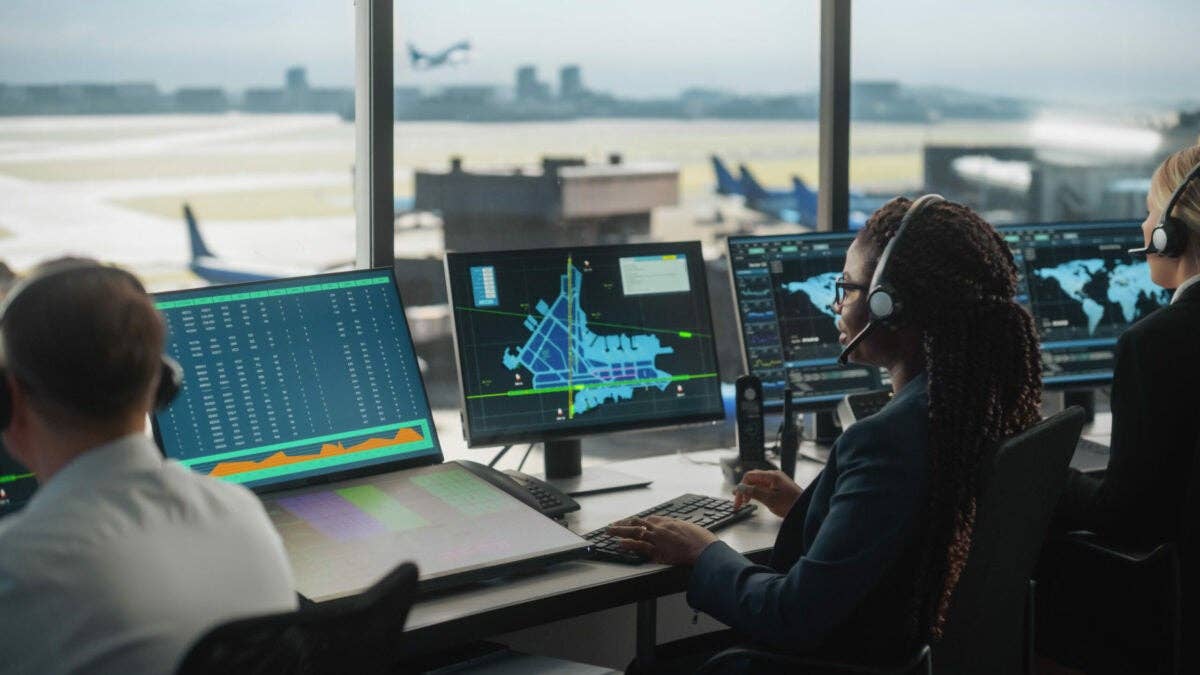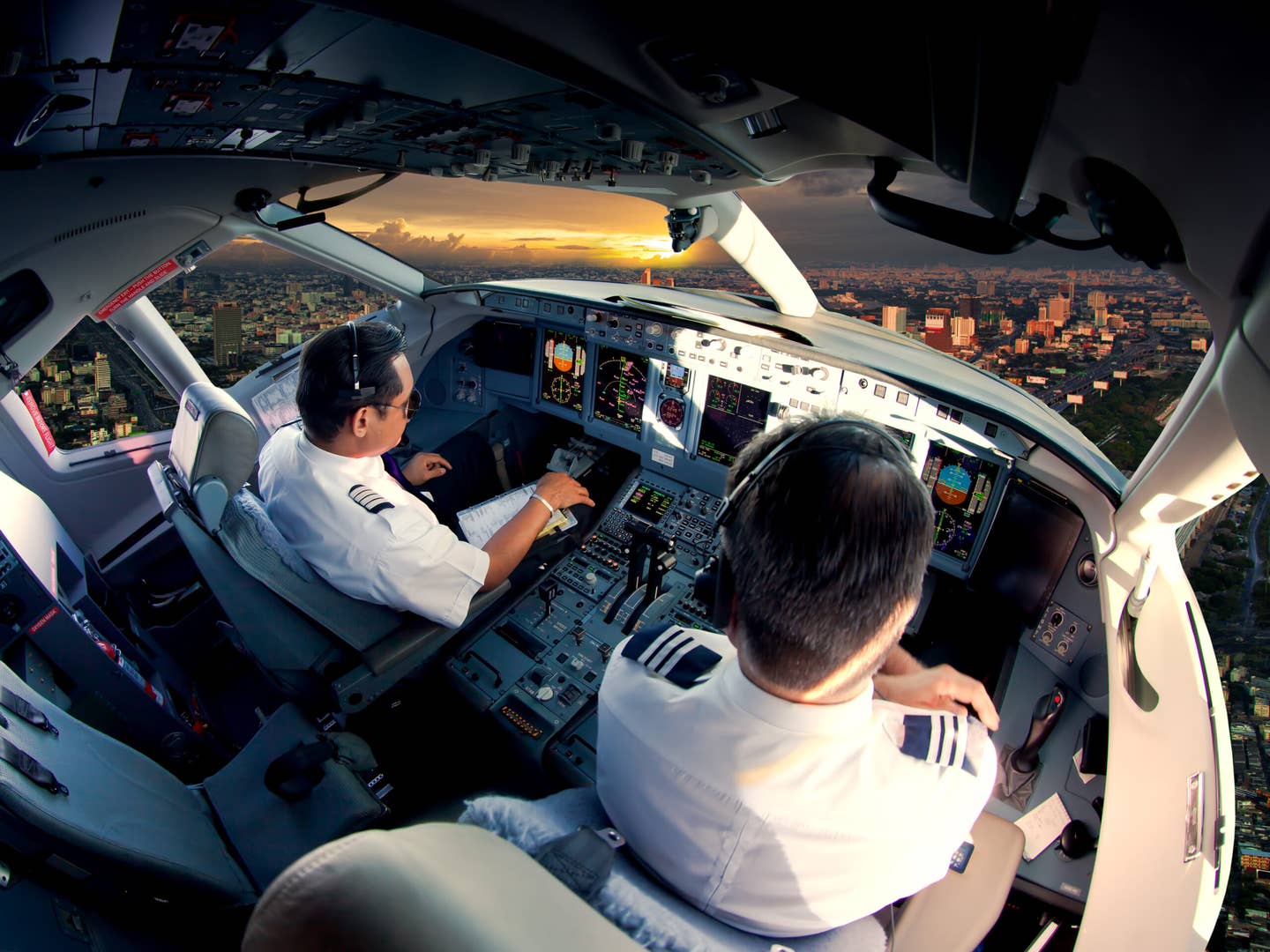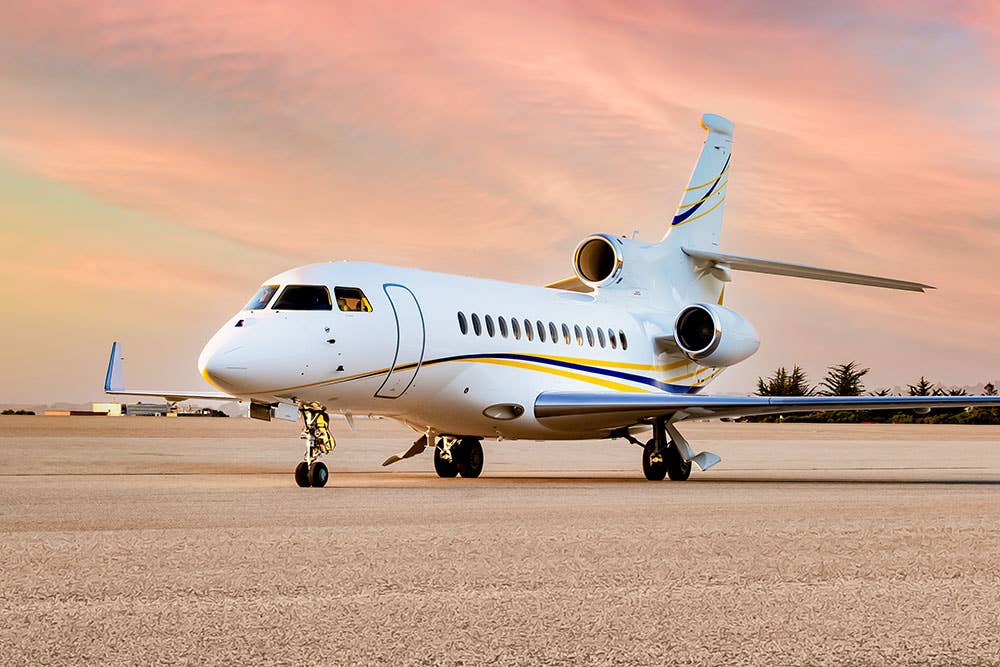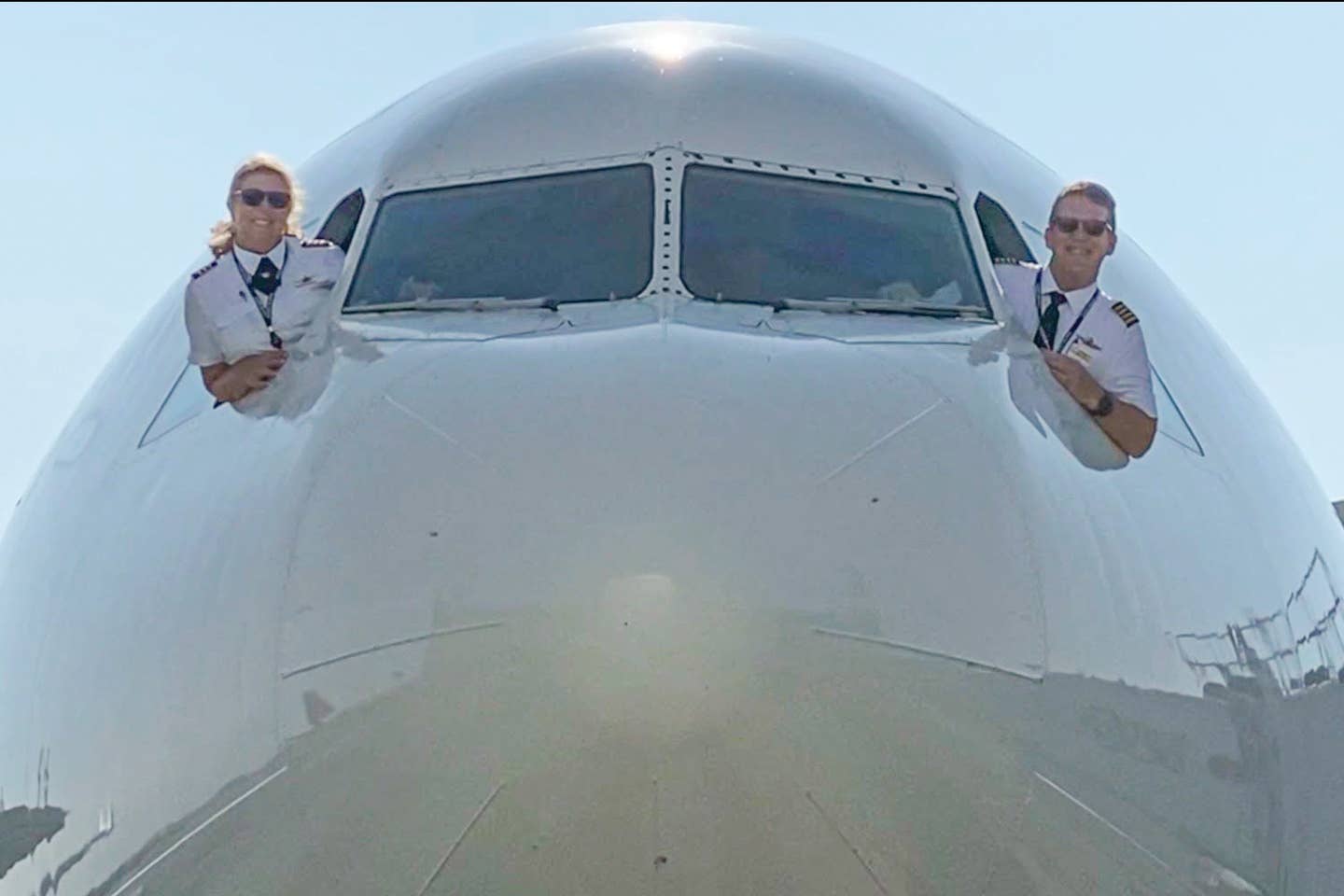
The Fahans following the last-minute water salute they received after landing at JFK. Courtesy Joe and Margrit Fahan
On a sunny August afternoon in New York City, an Airbus A330 landed on Runway 31R at John F. Kennedy International Airport. It appeared to be a perfectly normal flight, noteworthy only in the era of COVID-19 for having been one of relatively few airplanes to come across the North Atlantic tracks from Europe that day. But as the heavy jet taxied ponderously to its gate, there were a few signs that this was not an entirely routine arrival. A crowd of onlookers waved and cheered from the rooftop observation deck of the new TWA Hotel. The ground-control frequency crackled with congratulatory messages. As the sleek behemoth turned the corner onto Kilo Foxtrot taxiway, firetrucks sprayed twin jets from their water cannons, forming a perfect arc for the jet to taxi through.
This was a retirement flight—and a noteworthy one at that. Capt. Joe Fahan and First Officer Margrit Fahan were one of my airline’s few married pilot couples who frequently flew together as a team. Energetic and fun-loving, they started posting their aviation adventures to Instagram several years ago (@flyingfahans) and have built an international following of nearly 20,000. Now faced with the fallout of a pandemic that devastated the industry in which they’ve worked for 40 years, the Fahans chose to fly their final airline flight together.
Retirements have always been a big deal at the airlines. At the legacy carriers in particular, pilot careers are a throwback to the America of another age: a good-paying union job, protected by seniority, frequently held at a single company for life. Those of us who came up via the civilian route did a fair amount of jumping around on our way to that coveted major airline slot, but at my company, there are quite a few senior pilots who have never held another flying job outside of the military.
Retirement means that you’ve spent a lifetime flying millions of miles and hundreds of thousands of passengers safely around the globe. It means you’ve survived a career of real and simulated emergencies, arduous check rides, and biannual flight physicals. It signals an end to thousands of far-flung layovers spent with fellow crewmembers as well as years of missed holidays, birthdays and anniversaries at home. For the lucky, retirement means that the airline that hired you all those years ago has somehow survived the vicissitudes of a notoriously unstable industry, and though you may have been scarred by furlough, bankruptcy or mergers, you made it through to the end with hallowed seniority intact.
Accordingly, in normal times, retirement flights are major celebratory events. A retiring captain is traditionally allowed to bypass seniority for the first time in their career and is awarded the trip of their choice. They are usually allowed to hand-pick their crew. Spouses, friends and family accompany them to the final layover where a literal “party to end all parties” is thrown in their honor. The bittersweet last landing is typically followed by a water-cannon salute by airport firefighters, and the flight is usually met at the gate by a chief pilot and union representatives. (I often joke that after my retirement flight, I hope the chief pilot queries, “Who the hell are you?”) At my airline, retiring pilots are presented with a photo of their final aircraft that hangs in the crew room for their last month so hundreds of fellow crewmembers can sign their well-wishes.
Obviously, these are not normal times. Before the pandemic, we were in the middle of a major turnover wave as pilots hired during the 1980s growth spurt reached the mandatory retirement age of 65. This wave was expected to crest at the legacy carriers in 2023 and 2024, when several airlines would have retired more than 700 pilots in a single year. This was driving heavy hiring at the majors and a severe pilot shortage elsewhere throughout the industry. And then COVID-19 hit, and the airlines immediately found themselves massively overstaffed as senior international fleets in particular sat idle for want of unshuttered destinations. The airlines and their pilot unions scrambled to come up with inventive solutions to prevent furloughs, which in many cases included paying pilots partial salaries to take extended leaves of absence.
The next logical step was to offer early retirement to the oldest, most-senior pilots (those, incidentally, for whom the virus posed the greatest health risk). My airline offered three years of around 75 percent pay and two years of paid medical benefits. For pilots 62 years of age or older, the decision was almost a no-brainer. Joe Fahan was in this category, with only one year to go. However, management was not expecting enough takers to significantly mitigate furloughs and sent out Worker Adjustment and Retraining Notification letters to 2,558 junior pilots, around 18 percent of our seniority list. Our MD-88/90 fleet was permanently retired, and a huge displacement bid resulted in more than 1,000 captains slotted to return to the right seat—including yours truly.
Read More from Sam Weigel: Taking Wing
But then a curious thing happened. When the dust cleared, 1,806 pilots had signed up for the Voluntary Early Out Program, well above the expected number, nearly half of whom were under age 62. Margrit was one of these. With five years to go, she had planned on flying with Joe until his retirement, then upgrading and taking command of her beloved Airbus A330 for her last few years. But she kept thinking about all the junior pilots on the chopping block at our airline and elsewhere.
It wasn’t an abstract consideration: The Fahans’ youngest son, Billy, is an Embraer 175 first officer for a regional airline and had received his own furlough notice. Still, they vacillated for three weeks. “You don’t imagine going out this way,” Joe said. “It feels like being left out in the cold.” Margrit added, “You hate to leave because it’s your life.” After 25 years of bidding opposite schedules to raise their two sons, the Fahans had been flying Europe trips together for the last six years, and that enjoyable lifestyle was hard to give up. Ultimately, however, both Joe and Margrit elected to take the early out.
On September 1, 2020, more than 1,500 pilots of my airline’s pilots retired, the largest wave to do so since 2006 (just before our pension was terminated in bankruptcy). Many thousands elsewhere across the industry also hung up their spurs. There was little fanfare as they left the job that defined their adult lives: no hand-picked trips, no layover parties, very few water-cannon salutes, no crew-signed photos. Most merely flew their last trip and went home. Many had taken their retirement flight months earlier without ever realizing it.
The Fahans were lucky. They bid three Europe trips in August, and though two of these were canceled, a Milan, Italy, trip operated as scheduled. The pandemic kept friends and family at home, and the Fahans didn’t get to hand-pick their crew, but they ended up with a good friend as relief pilot anyway. The three-day layover was filled with trips to Venice and Lake Como and meeting an Italian Instagrammer who had home built his own A330 simulator. Air traffic controller friends filmed their arrival to Kennedy and arranged for the now-rare water-cannon salute. A video taken by their relief pilot and posted to Instagram shows Joe and Margrit reading their last parking checklist, after which Joe turns to the camera:
“Well, the flight is over, the shutdown checklist is over, the jobs are over. They surprised us with a water salute after all when we came into the gate, and that’s where I lost it. So, a bit of advice for all of you young aviators out there: The plane you fly is gonna be cool, but it’s the experiences you have on layovers, and the places you go, and the people you meet, and the friends you make that makes all the difference in the world. And if you have half the career we had, you’re going to love it.”
When I talked to Joe and Margrit a few weeks later, they were towing their boat to southwest Florida, where they’ll be spending an increasing amount of time in retirement. “It’s weird being retired,” Joe said. “You miss the airplane, the layovers.” The Fahans are hoping to get their aviation fix via GA flying. Margrit was a sailplane instructor prior to becoming an airline pilot, and she’s looking at getting back into it, while Joe is planning to get his glider rating for the first time and perhaps a floatplane rating as well. Both Joe and Margrit have flown cross-country Pet Rescue Pilots missions in a friend’s Cessna 414, and they are considering a similar twin-engine purchase with the intention of doing further humanitarian work. “Basically, any reason to go fly,” Joe said, with a chuckle.
Since the Fahans retired, more than 600 potential furloughs at our airline were reinstated to their original positions, and quite a few junior captains who would have been downgraded, including myself, are now remaining in the left seat. Though negotiations between the company and union have been hampered by missteps and mutual distrust, they have recently reached additional agreements to save several hundred jobs and keep the remaining 1,700 furloughs on property with partial pay. Similar programs have mitigated the devastating effects of the pandemic all around the airline industry; Billy Fahan had his furlough rescinded for at least six months.
The reality is that until a vaccine is widely distributed, or until rapid testing reaches the point of allowing widespread domestic and international travel, the airline industry will continue to be a shell of itself, and all airline jobs will be at risk. But thanks to a lot of senior pilots like the Fahans who chose to leave the flight deck during their golden-sunset years, many of us in the earlier stages of our careers have a fighting chance of making it through unscathed. To the many recent airline retirees, we owe a great debt of gratitude.
This story appeared in the January-February 2021 issue of Flying Magazine

Subscribe to Our Newsletter
Get the latest FLYING stories delivered directly to your inbox

